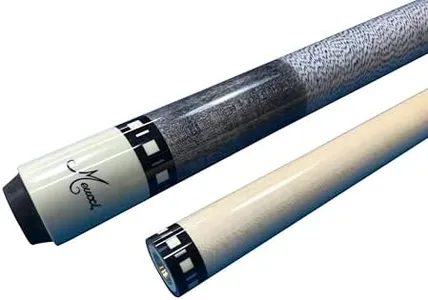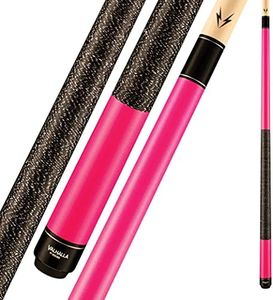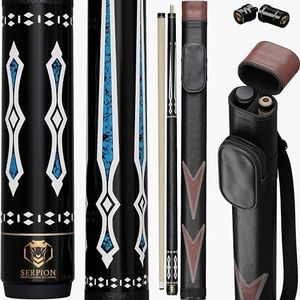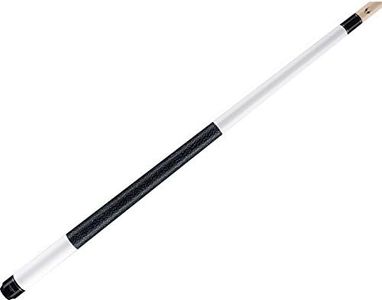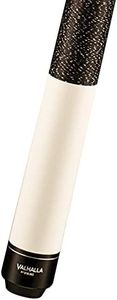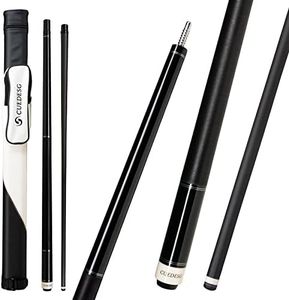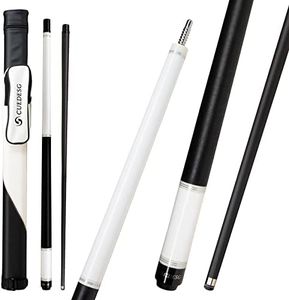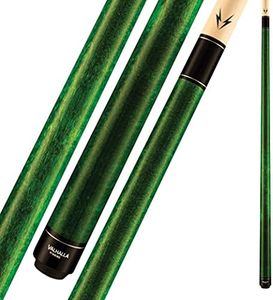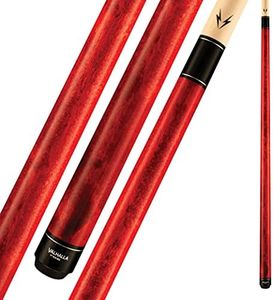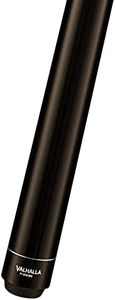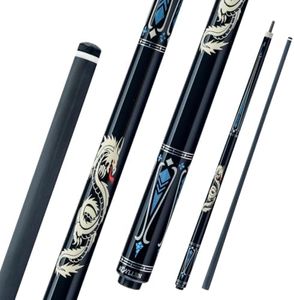We Use CookiesWe use cookies to enhance the security, performance,
functionality and for analytical and promotional activities. By continuing to browse this site you
are agreeing to our privacy policy
10 Best Cues Sticks
From leading brands and best sellers available on the web.Buying Guide for the Best Cues Sticks
Choosing the right cue stick is essential for anyone who wants to enjoy and improve their game of pool or billiards. Whether you’re just starting out or looking to refine your skills, it's important to understand what makes a cue stick suitable for your playing style and needs. A good cue should feel comfortable in your hands, allow you to control your shots well, and help you play with confidence and precision. When picking a cue, you should focus on several key features that affect its performance and feel. Understanding what each of these features means and how it influences the game will help you make a smart, personal choice.Cue LengthCue length refers to how long the stick is from tip to end, usually measured in inches. This is important because it affects how easily you can control the cue and reach different shots on the table. Shorter cues (around 48-52 inches) are often better for younger players or for use in tight spaces, while standard cues (57-59 inches) are suitable for most adults. If you’re taller or have longer arms, you might feel more comfortable with a longer cue. The best length for you depends on your height, arm length, and the space you’re playing in, so always make sure the cue feels natural when you practice a few strokes.
Cue WeightThe cue weight is how heavy the stick is, usually ranging from about 17 to 21 ounces. Weight is important because it influences how powerful your shots can be and how much control you feel. Lighter cues (17-18 ounces) offer faster movement and can be easier for precise shots, while heavier cues (20-21 ounces) add power but may require more strength to handle. Most players prefer a middle weight (about 19 ounces), but it’s a personal choice based on your strength and how you like to strike the ball. Try different weights to see which feels best for your style.
Tip Size and HardnessCue tip size is the diameter of the tip, typically between 11 and 14 millimeters. The hardness refers to how firm the tip material is, usually categorized as soft, medium, or hard. Smaller tips (11-12 mm) give you more spin control but are less forgiving; larger tips (13-14 mm) are more forgiving and make it easier for beginners to hit accurately. Soft tips are good for allowing spin and making precise shots, but they wear out faster; hard tips last longer and give you a solid hit, but provide less spin. Your level of experience and playing style should guide your choice.
Cue MaterialCues can be made from different materials like wood, fiberglass, or carbon fiber. Wooden cues are traditional and often feel more natural, offering a classic playing experience. Fiberglass and carbon fiber cues are more resistant to warping and can be lower maintenance. While material can affect durability, feel, and sometimes the price, the main thing is to choose a cue that feels comfortable and reliable in your hands. If you play often or in humid conditions, using a cue made from modern materials might provide more consistency.
Cue WrapThe wrap is the material around the grip area of the cue, which can be leather, linen, rubber, or sometimes left bare. It helps with grip and comfort while shooting. Leather and linen wraps provide a traditional feel and absorb sweat, which can help with grip during long sessions. Rubber wraps are soft and comfortable but may wear out over time. Some players prefer cues with no wrap for a smoother touch. Choosing the right wrap depends on how your hands feel when holding the cue and whether your hands sweat during play.
Number of PiecesCue sticks can be made as a single piece or in multiple pieces, most commonly two pieces that screw together. Two-piece cues are popular because they are easier to transport and store, making them a smart choice for players who travel to different tables. One-piece cues are often found at bars or pool halls and are more suitable for stationary use. Choose a two-piece cue if you want portability and convenience, especially if you plan to take your own cue to different places.


